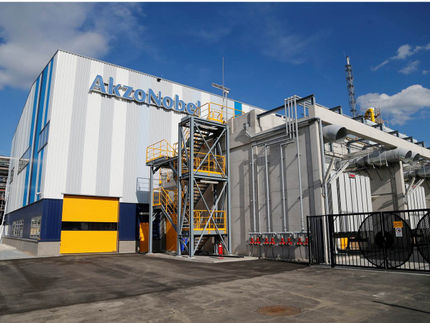Commissioning of first large-scale plant for climate-friendly chlorine production
Intelligent technologies from Uhde and Bayer improve energy efficiency
In March 2010 Uhde and Bayer MaterialScience signed a contract for the construction of a new chlorine plant at the Chempark Krefeld-Uerdingen site. This 20,000-tonne chlorine demonstration plant has now come on-stream. The oxygen-depolarised cathode used for this has been incorporated into the new single-element technology from Uhde/UHDENORA. With the introduction of this new industrial manufacturing process the two companies involved are hoping to significantly reduce energy consumption and CO2 emissions. The combination of the two technologies was developed at Bayer in Leverkusen over the past eight years. Provided the two-year large-scale trial is successful, Bayer will gradually switch its chlorine production to the new process. In addition, the companies also intend to offer the new technology on the global market from 2013 onwards. Major German chlorine producers have already announced their interest, as have a number of companies in the Asia/Pacific region.
”We are proud of our long partnership with Bayer MaterialScience,” said Alfred Hoffmann, Member of Uhde’s Executive Board. “As a technology-driven company we are always on the lookout for solutions that provide our customers and the market with economic and ecological benefits. This first-class, future-oriented technology has the potential to offer such a solution.”
”Improving energy efficiency in chemical production processes can considerably reduce electricity consumption in Germany and elsewhere in the world,” said Patrick Thomas, Chief Executive Officer Bayer MaterialScience.
Chlorine is an essential building block in today’s chemical industry. Electrochemical chlorine production is, however, one of the most energy-intensive processes in the entire sector. Chlorine is used for the production of plastics in particular and also for the manufacture of pharmaceuticals.
Most read news
Other news from the department manufacturing

Get the chemical industry in your inbox
By submitting this form you agree that LUMITOS AG will send you the newsletter(s) selected above by email. Your data will not be passed on to third parties. Your data will be stored and processed in accordance with our data protection regulations. LUMITOS may contact you by email for the purpose of advertising or market and opinion surveys. You can revoke your consent at any time without giving reasons to LUMITOS AG, Ernst-Augustin-Str. 2, 12489 Berlin, Germany or by e-mail at revoke@lumitos.com with effect for the future. In addition, each email contains a link to unsubscribe from the corresponding newsletter.



























































